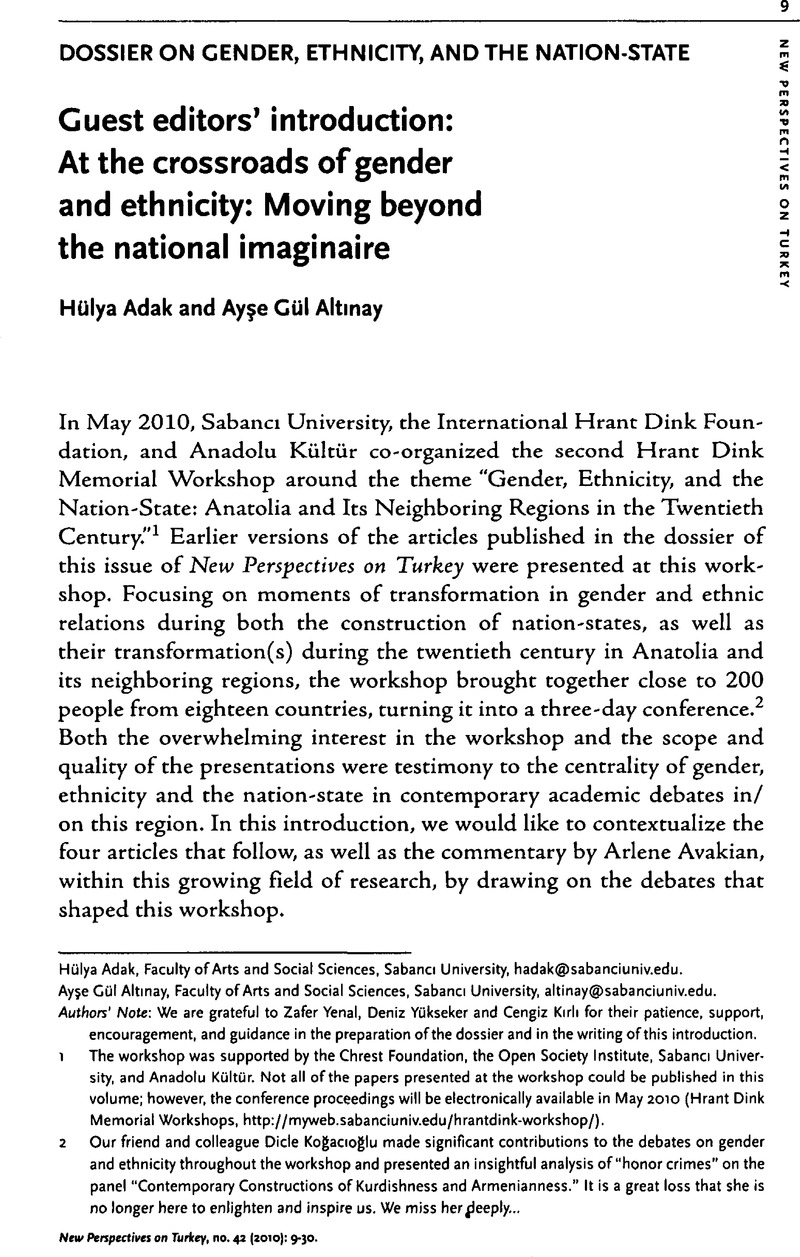Crossref Citations
This article has been cited by the following publications. This list is generated based on data provided by Crossref.
Altınay, Ayşe Gül
2014.
Centennial challenges: Denationalizing and gendering histories of war and genocide.
European Journal of Women's Studies,
Vol. 21,
Issue. 3,
p.
307.
Adak, Hülya
2014.
A Journey into Women's Studies.
p.
266.
Altınay, Ayşe Gül
2019.
Undoing Academic Cultures of Militarism.
Current Anthropology,
Vol. 60,
Issue. S19,
p.
S15.



